Guest Post by Eric Peters

Just like our marriages, nothing’s perfect about cars – whether they are new cars or old cars. Here are a few things about new cars that are both good and bad:
It is my sincere desire to provide readers of this site with the best unbiased information available, and a forum where it can be discussed openly, as our Founders intended. But it is not easy nor inexpensive to do so, especially when those who wish to prevent us from making the truth known, attack us without mercy on all fronts on a daily basis. So each time you visit the site, I would ask that you consider the value that you receive and have received from The Burning Platform and the community of which you are a vital part. I can't do it all alone, and I need your help and support to keep it alive. Please consider contributing an amount commensurate to the value that you receive from this site and community, or even by becoming a sustaining supporter through periodic contributions. [Burning Platform LLC - PO Box 1520 Kulpsville, PA 19443] or Paypal
-----------------------------------------------------
To donate via Stripe, click here.
-----------------------------------------------------
Use promo code ILMF2, and save up to 66% on all MyPillow purchases. (The Burning Platform benefits when you use this promo code.)
Tire inflator kits –
To save weight (and make room in ever-smaller trunks) many new cars no longer have a spare tire at all. Not even a mini-spare. Instead, when you get a flat, you unbox a tire inflator (and repair) kit, usually packaged under the trunk floor or in a side panel storage cubby. It contains a small air compressor you plug into the car’s cigarette lighter – whoops, politically incorrect… meant to say “power point” – and a can of goo, basically, that mixes with the incoming compressed air, shoots into the flat tire – via the stem – and simultaneously plugs the hole and refills the tire.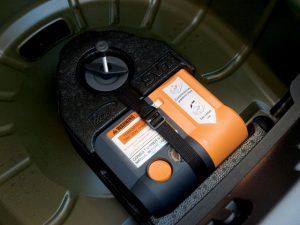
Upsides: You can get back on the road in minutes, without getting dirty. More room in the trunk for cargo, less weight to carry around and cost you gas. Also, instead of driving around on three normal-sized wheels/tires and one clown-car-sized “temporary use only” mini-spare, you get back on the road with four normal-sized wheels/tires.
Downsides: The repair/inflator kits can fix a nail in-the-tread flat but are useless if the flat is the result of a sidewall puncture or tear. Then you’ll wish you had a spare – even a mini-me spare. Your only option now is to call for roadside assistance. Also, they are one-shot-only fixes. Unlike a spare (standard or mini) that you can put back into the trunk for next time, you will need to get a new bottle of goo at the dealership – and it probably won’t be free.
Base/clearcoat finishes –
Modern cars have two layers of paint, the underlying color layer and – applied on top, to give it shine as well as protect the color coat from the sun and other environmental factors – a translucent layer of clear paint.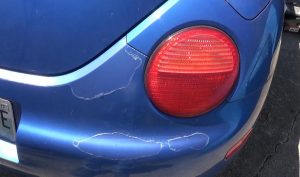
The upside of base/clear finishes is that the paint job holds up better to exposure – especially to the sun and chemicals such as road salt. Base/clear finishes are also pretty tough and resist chips.
The downside of base/clearcoat finishes is that if the clear coat begins to degrade – and this happens not infrequently – the fix is to repaint the car (or at least, the affected area). The shine of a base/clear finish can’t be brought back to life by rubbing compound and elbow grease – as was possible with the old acrylic/lacquer “one stage” painting methods. Once the clear coat yellows or cracks, that’s it. The shine is gone forever. Using rubbing compound will – usually – only make things worse.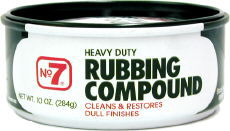
That’s because the shine comes from the clear. The underlying color coat is dull. Look at the underside of your trunk or hood or in the door jambs; many times these parts of the car’s body are painted but not clear-coated at the factory (to save a little money per car during manufacture). This is what the rest of your car would look like without the clear.
So if you use rubbing compound and rub off the clear topcoat, you’ll rub away the shine along with it.
Modern car manual transmissions –
It used to take much more effort to drive a car or truck with a manual transmission because the clutch was engaged and disengaged entirely by mechanical action – by your left leg, pressing it in and out. In vehicles equipped with powerful engines, this could be like doing leg presses at the gym – the clutch being much stiffer to cope with the power of the engine.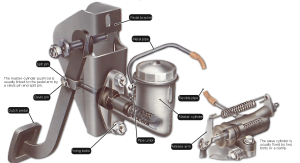
Then – beginning in the ’80s – clutches got hydraulic assist. Just as when you press on the brake pedal, you are actually depressing a column of fluid that transmits the force to the brakes, when you depress the clutch in a modern car with a manual transmission, the same thing is going on. Hydraulic fluid – which can’t be compressed – transmits the force (applied by your left leg) to engage and disengage the clutch.
Upside? The car is much easier – less tiring – to drive. Especially in stop and go traffic. Also, most modern hydraulically-engaged clutches self-adjust to compensate for clutch wear, so the clutch itself generally lasts much longer, often as long as 150,000 miles or more.
Downside? When the hydraulic system fails, the car will be undriveable, no matter how “good” the clutch is. And in some cars, critical parts of the system – such as the slave cylinder – can’t be gotten to without removing the transmission from the vehicle. That’s usually at least several hundred dollars in labor – plus the parts you need.
The good news here is that most new cars can go about twice as long in between oil changes as was routine in the past – generally, about 6,000 miles and twice a year vs. every 3,000 miles (and every three months or so) before the ‘90s. Some current/recent-vintage cars can go 10,000 miles or even more in between oil changes – and their engines are equipped with sensors that can actually sample the condition of the oil and tell you when it’s necessary to change the oil.
The bad news is that this savings – not having to get the oil (and filter) replaced as often – is wiped away to some extent by the much higher cost of oil (and filters). Synthetic/semi-synthetic oil – which many new car engines require – can cost $10 or more per quart, which is about twice or even three times what oil cost back when changeout intervals were more closely spaced.
It’s nice to be able to see where you’re going. All new cars have excellent headlights – especially vs. what was typical of cars built before the mid-late 1990s, when most new cars came with (at best) sealed beam halogen headlights. In comparison with modern headlight assemblies – LED, high intensity discharge/projector beam – they were not much better than a couple of flashlights bolted to the hood.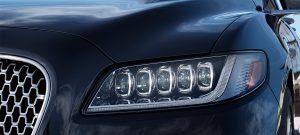
But – on the upside – sealed beam headlights were inexpensive, in part because they were pretty generic – usually either round or square, one or the other type fitting a variety of different models. They cost about $25 each. Also, they were made of glass and so pretty tough . . . relative to the plastic headlight assemblies that all new cars come with. Which are more fragile and a lot more expensive to replace when damaged, in part because they tend to be specific to a particular car rather than generic. It’s not uncommon for a single headlight assembly to cost $100 or more.
Sometimes, a lot more.


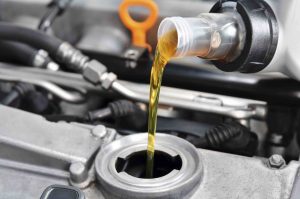



I guess it depends what conditions you drive under. If you get a blow-out – well you need a whole new tire (a perhaps a wheel). With the advent of cell phones – most people would call for a tow / tire change. Especially if you are on the freeway. The pump / tire sealant would be good if you come out in the morning and have a flat.
Hydraulic clutches are great. Anything can break. I see no disadvantage to a hydraulic clutch.
Whose the asshole voting this down?
Cars are one of the places where technology is just getting started. The hyper cars that Porsche, Ferrari, and McLaren put out 3 years ago were giant leaps in what can be done in the ways of performance and fuel economy. They were demonstration projects basically with price tags from a million bucks plus. But in the end, the non-technological stuff learned from those experiments is going to end up being the most valuable. All the complications of that technology have been made unnecessary by simply stripping it out, and losing the weight. With what was learned in those projects about aerodynamics, and gaining power, and improving handling and braking, the path ahead is going to be unbelievable. Two recent cars most directly related to those projects, the Acura NSX, and McLaren 720s took totally different paths. Acura made the NSX in direct lineage to the hypercars and it’s a dud. McLaren stripped out the tech and made the 720s, and it’s faster than the hypercars for about 250 grand. And right now it’s probably the fastest and most technologically-advanced car on the planet. State-of-the-art went from a million-and-a-half dollars to 250 grand in 3 years. Wait till those ideas work their way down to Mustangs and Camaros and stuff. It’s going to be awesome. And I bet it doesn’t take 3 more years
Synthetic oil is great. You can easily go 25,000 miles or change it once a year, even down in the heat I live in. I’ve done it for decades. And Walmart sells it cheap. 5 quarts is 25 bucks in the big can. When it’s on sale it’s 21. That’s the same price as regular oil.
star: all good points! The single greatest advancement in recent years is in the braking system. Old farts(like me) probably remember the old 4 wheel drum brakes. Really bad shit! Always having to adjust ’em(the self-adjusters corroded and froze up) and God forbid, you drive through a mud puddle the brakes were worthless until they dried out. Dangerous beyond belief! Then we got front discs, a definite improvement, and finally 4 wheel discs. But it wasn’t until we got the anti-skid systems(borrowed from airplanes) that the brakes really were superb. No more “pumping the brakes”, simply push the pedal to the floor and hold it there for max braking.
“But it wasn’t until we got the anti-skid systems”
A must in a Northern climate.
Hey Ragman, miss the summer heat? (94 today). Now they have those carbon ceramics, they are made of similar stuff to the tiles on the space shuttle. They get glowing red hot and cool in seconds. I’ve never had them, supposedly the pads last 100,000 miles, and with no brake dust. Video is one minute. Crazy stuff.
It’s a mixed blessing. Things like the gaskets and of course the superior computer controlled machining tolerances are far superior in todays cars. No oil leaks. However the days of amateur backyard mechanics is coming to an end. Most of the problems with newer vehicles have to do with the electronics which don’t do well in a high heat environment and, as we all know, todays cars run much hotter than the previous ones. Maintenance is much more difficult – things such as internal water pumps which used to be basically a bolt on bolt off proposition are now extremely difficult to access and require specialized tools. Fuel pumps which used to be externally mounted are now enclosed in the fuel tank and the average repair bill for this is close to $1000. Sensors and switching components are throw aways, however determining exactly which ones are faulty is beyond the scope of anyone without access to extremely expensive diagnostic equipment so everyone is at the mercy of large repair facilities or dealerships where labour rates are over $100 per hour just to diagnose the problem. And, of course, with a few noticeable exceptions, todays cars are stylistically boring compared to earlier ones ( pre 80’s ). I’ve heard them being described as looking like ” little Smarties ” on wheels. But the biggest problem IMHOP is the loss of driver control to computerized avoidance technology which removes more and more driver control with ever new model year. And don’t get me started on attention distracting NAV screens. These are probably a far bigger contributor to accidents than cell phone use or texting while driving could ever be.
Cars have become little more than rolling computers with horrible user interfaces.